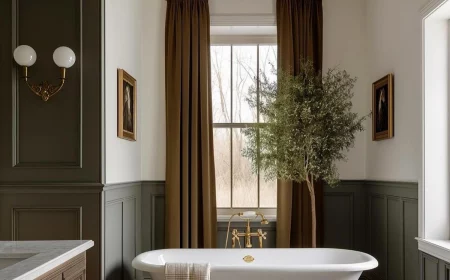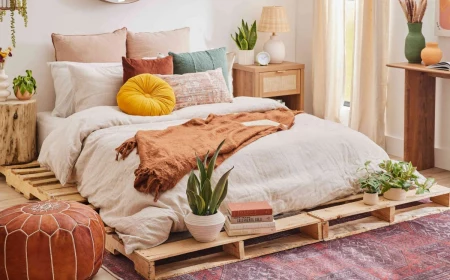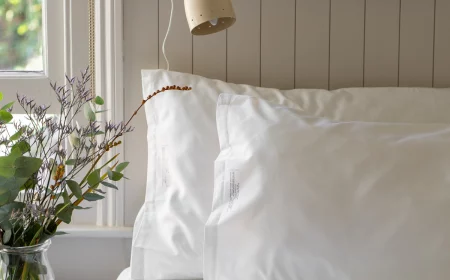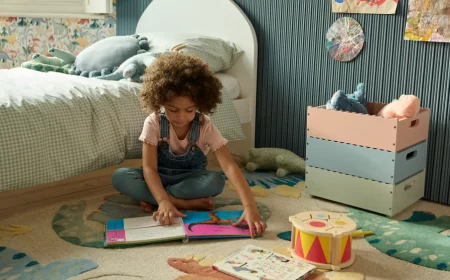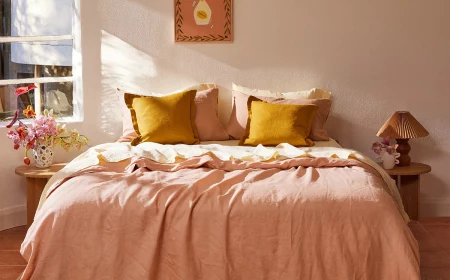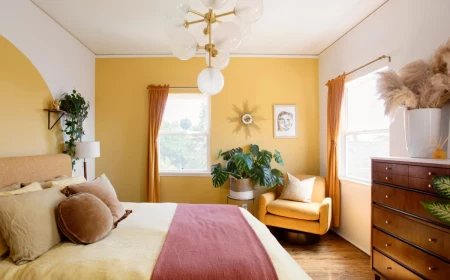The Secrets to a Luxe Bedroom (That Have Nothing to Do With a Big Budget)
I’ve spent years walking through hundreds of bedrooms in my line of work, and I can tell you a secret: the most luxurious ones rarely had the highest price tags. I’ve seen rooms dripping with expensive furniture that felt cold and sterile, and I’ve seen rooms put together on a shoestring budget that felt like a five-star hotel suite. The difference is never about money. It’s about building a feeling, layer by layer, with intention.
In this article
So many people think luxury is something you can buy off a shelf. You can’t. It’s about understanding the little details that the pros use to create a space that’s a true sanctuary for rest. This isn’t about finding cheap knock-offs; it’s about knowing where to invest your money and where to save it for maximum impact. Forget the brand names and release dates—these are the timeless principles that work in any space, on any budget.
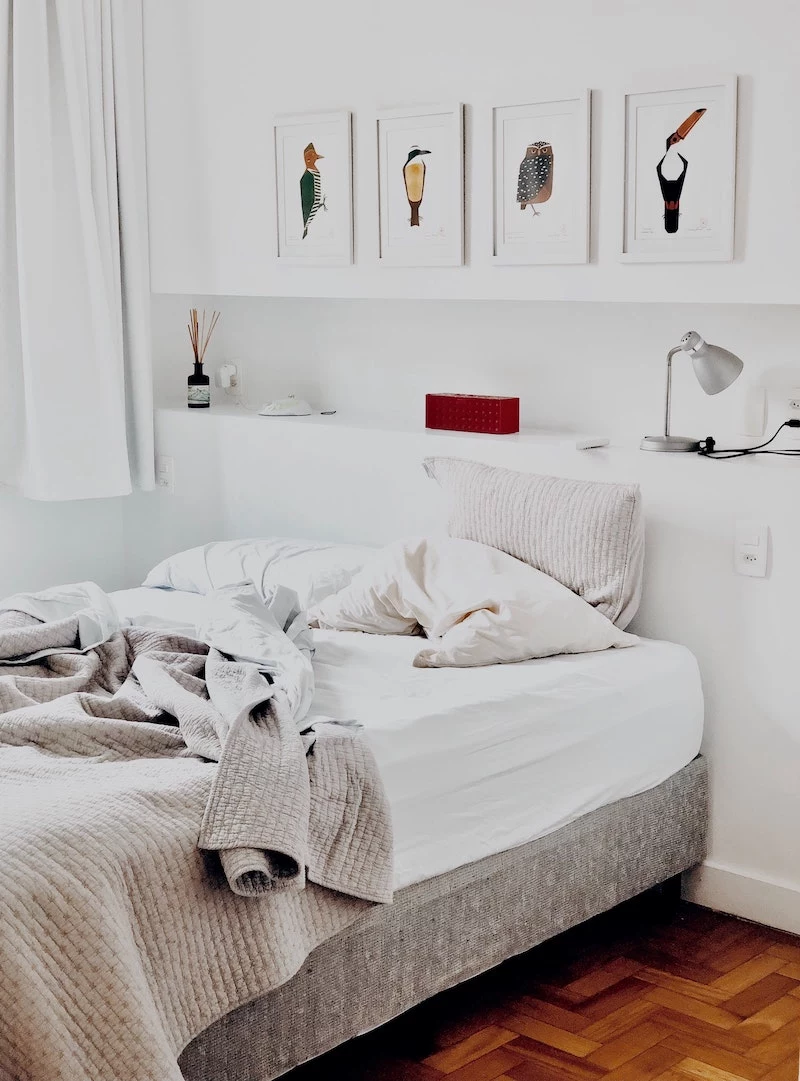
First Things First: Master Your Light and Color
Before you even think about buying a pillow, you need to understand your room’s most fundamental feature: light. How sunlight moves through your space dictates everything. Honestly, getting this right is half the battle.
The Real Deal on Paint Color
Ever wonder why a paint color looks amazing on the little chip but completely different on your wall? It’s all about something called Light Reflectance Value, or LRV. It’s a scale from 0 (pure black) to 100 (pure white) that tells you how much light a color reflects.
High LRV paints (think off-whites and pale greys, usually 60+) bounce light around, making a room feel bigger and brighter. Low LRV paints (like moody navy or charcoal, often below 20) absorb light, which creates a cozier, more intimate vibe. Good to know: You can almost always find the LRV on the back of the paint chip or on the manufacturer’s website. It’s a super helpful number to know!
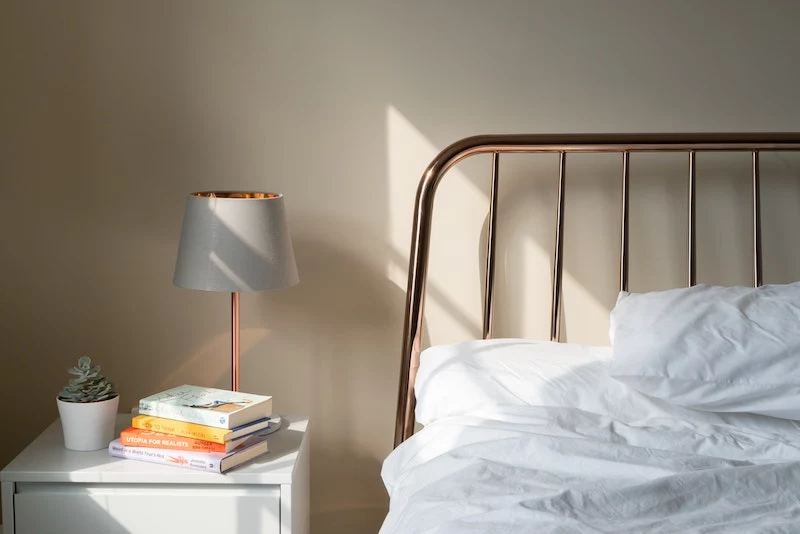
I once worked on a small, north-facing bedroom where the owner wanted it to feel airy and bright. They picked a crisp, pure white. Seemed logical, right? But the cool northern light made that white paint look almost blue and clinical. We switched to a soft white with a tiny hint of yellow in it (LRV around 75). It still bounced plenty of light, but that touch of warmth completely transformed the room into the welcoming space they wanted. So, a quick tip: ALWAYS test paint on a big patch of your wall and look at it in the morning, afternoon, and evening light before committing.
Layering Your Lights Like a Pro
A single, lonely light fixture in the middle of the ceiling is a classic design mistake. It’s harsh and creates weird shadows. Instead, think in layers. You need at least three types of light:
- Ambient Light: This is your room’s overall glow. It can be a central fixture, but it absolutely MUST be on a dimmer switch. A dimmer costs maybe $25 at Home Depot and takes less than an hour to install, but it gives you total control over the mood. It’s non-negotiable.
- Task Light: This is for specific activities, like reading in bed. For bedside lamps, aim for the bottom of the lampshade to be about 24-28 inches above the mattress. This puts the light where you need it without blinding you. Wall-mounted sconces are a great alternative that frees up your nightstand space, too.
- Accent Light: This is the fun stuff! Use a small, focused light to highlight a piece of art or a cool architectural feature. It adds depth and a custom-designed feel.
Heads up! If you’re installing anything that requires new wiring, like sconces, please hire a licensed electrician. It’s a small cost for major peace of mind against fire hazards.
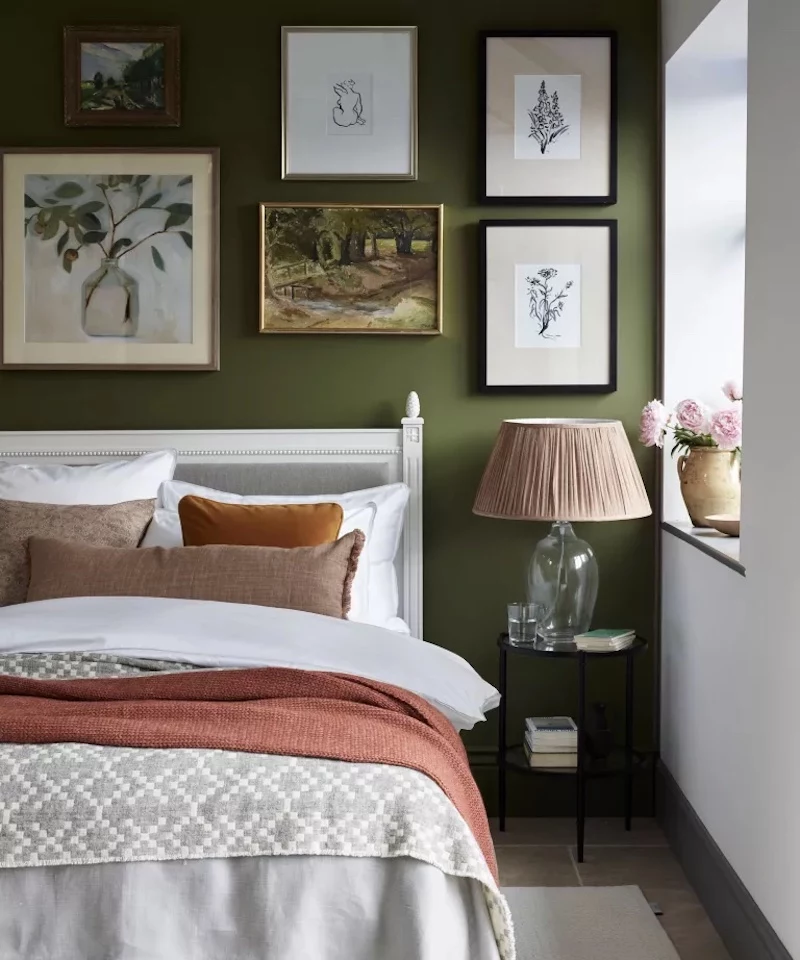
The Anchor of the Room: Getting the Rug Right
A rug does more than just feel nice under your feet; it anchors the entire room. But choosing the wrong size is a dead giveaway of an amateur design. A tiny rug floating in the middle of a room makes everything look small and disconnected.
Sizing Rules That Always Work
The pros follow a few simple guidelines to create that plush, pulled-together look. Here’s how to do it:
- The Luxe Method: Get a rug big enough to fit completely under the bed AND the nightstands, with at least 18-24 inches of rug showing on all three sides. This creates a super soft landing pad when you get out of bed.
- The Smart Method: A more common and budget-friendly approach. The rug goes under the bottom two-thirds of the bed, stopping just before your nightstands. You still want that 18-24 inches of rug visible at the sides and foot of the bed.
- The Small-Space Solution: If a large rug isn’t in the cards, place a runner on each side of the bed. You get the warmth and color without covering your entire floor.
Whatever you do, never choose a rug that’s narrower than the width of your bed. It visually squeezes the space and looks awkward.

Let’s Talk Materials (and Budgets)
The material you choose makes a huge difference. Wool is a fantastic choice—it’s durable, feels amazing, and holds color beautifully. But let’s be frank, it can be a serious investment, often starting at $500 and going way up from there.
For a more grounded, organic vibe, natural fibers like jute or sisal are great and more affordable. Just a heads up, they can be a bit scratchy, so they aren’t for everyone in a bedroom. The real hero for budget-conscious design? A high-quality synthetic rug. Modern polypropylene rugs have come a long way. They are incredibly durable, stain-resistant, and can feel surprisingly soft. You can often find a great-looking one for between $150 and $300 for a large size.
The Main Event: How to Dress Your Bed
The bed is the heart of the room, so how you dress it is critical. It’s about more than just a high thread count; it’s about mixing textures and materials to create an irresistible, cloud-like nest.
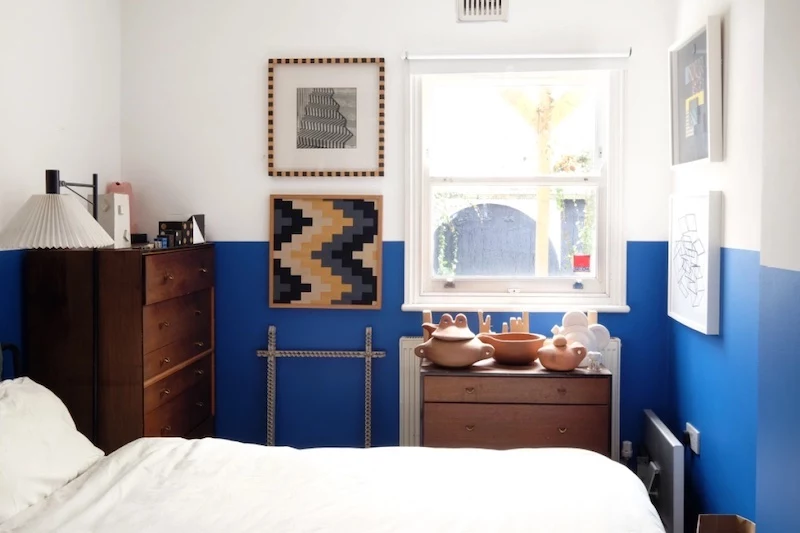
Looking Beyond Thread Count
Marketing has taught us that thread count is everything. It’s not. What matters more is the quality of the fiber and the weave.
For fiber, look for long-staple cottons like Pima or Egyptian cotton. The longer fibers make for a smoother, stronger, and longer-lasting sheet. And for weave, you’re usually choosing between two main types:
- Percale: This is a simple grid-like weave that feels crisp, cool, and matte. Think of the perfect button-down shirt. It’s incredibly breathable and gets softer with time.
- Sateen: This weave has a silkier, smoother feel with a slight sheen. It’s a bit warmer and cozier than percale.
There’s no right answer—it’s pure personal preference. I’m a hot sleeper, so I swear by percale.
The Art of Layering
A perfectly layered bed is what truly signals luxury. Here’s the formula:
- Start with Great Sheets: This is what touches your skin, so don’t skimp here.
- Add a Coverlet or Quilt: This mid-weight layer adds texture. Fold it at the foot of the bed. A simple matelassé coverlet is a timeless choice.
- Bring in the Duvet: Here’s the secret to that fluffy, overstuffed look. Buy a duvet insert that’s one size larger than your duvet cover. For instance, if you have a queen duvet cover (typically around 90” x 90”), buy a king-size insert (around 104” x 90”). That extra fill makes all the difference!
- Toss on a Throw: A chunky knit or soft cashmere-blend throw draped casually across a corner adds that final touch of cozy.
- Pillow Perfection: Don’t just prop up your two sleeping pillows! Start with two large square Euro shams against the headboard. Then layer your two standard sleeping pillows. Finish with one to three smaller decorative pillows in a complementary texture or color.
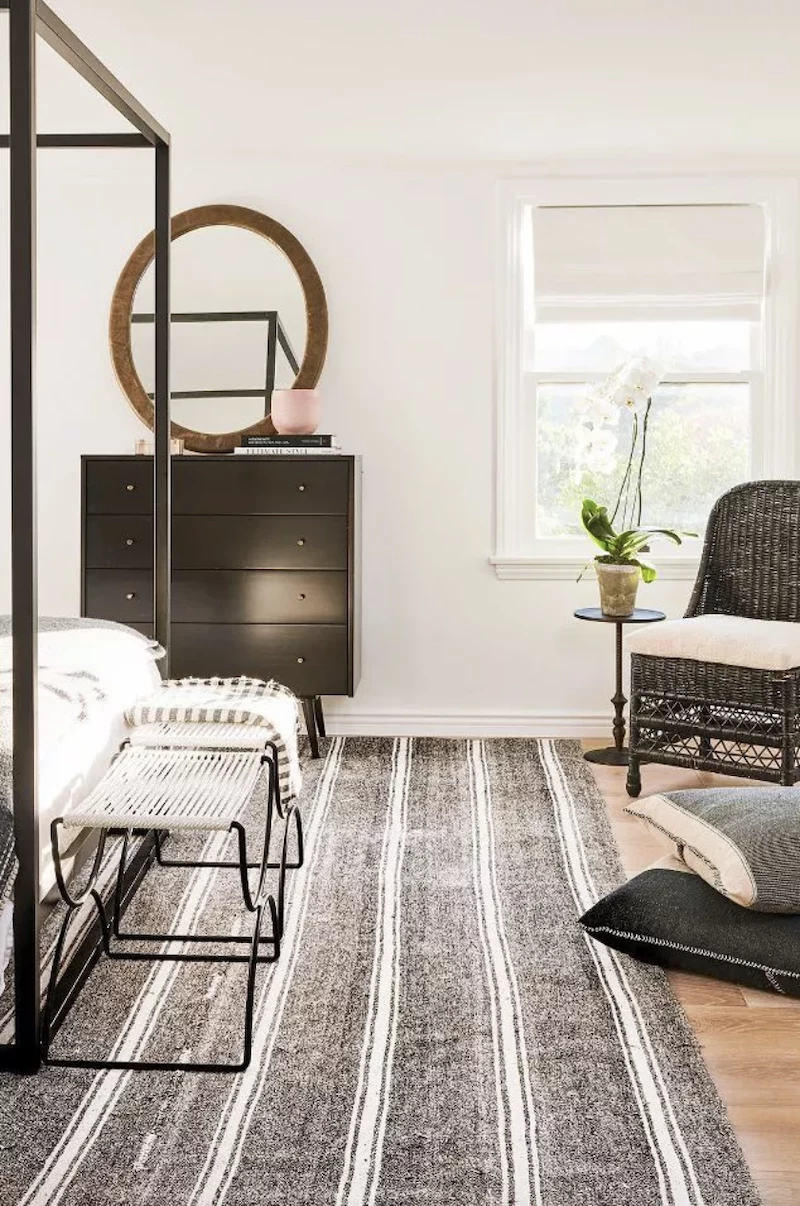
Using Your Walls to Set the Mood
Your walls are your room’s biggest canvas. How you treat them with paint, art, and mirrors sets the entire tone.
Paint Finish Matters, Too
We talked about color, but the paint’s finish is just as important. A matte or flat finish has no shine and is great for hiding wall imperfections, creating a velvety look. Eggshell has a tiny bit of sheen and is much easier to clean, making it my go-to for most bedrooms. A satin finish is even more durable and great for trim and doors.
A lesser-known trick: Paint the walls in an eggshell finish and the trim and doors in a satin finish of the exact same color. This creates a subtle, sophisticated contrast that looks incredibly high-end.
Hang Art and Mirrors with Purpose
The number one mistake people make is hanging art too high. It should relate to the furniture and the people in the room. A simple guideline is the 57-inch rule: the center of the artwork should be 57 inches from the floor, which is the average human eye level. If you’re hanging art above a dresser or headboard, leave a 4-6 inch gap between the furniture and the bottom of the frame.
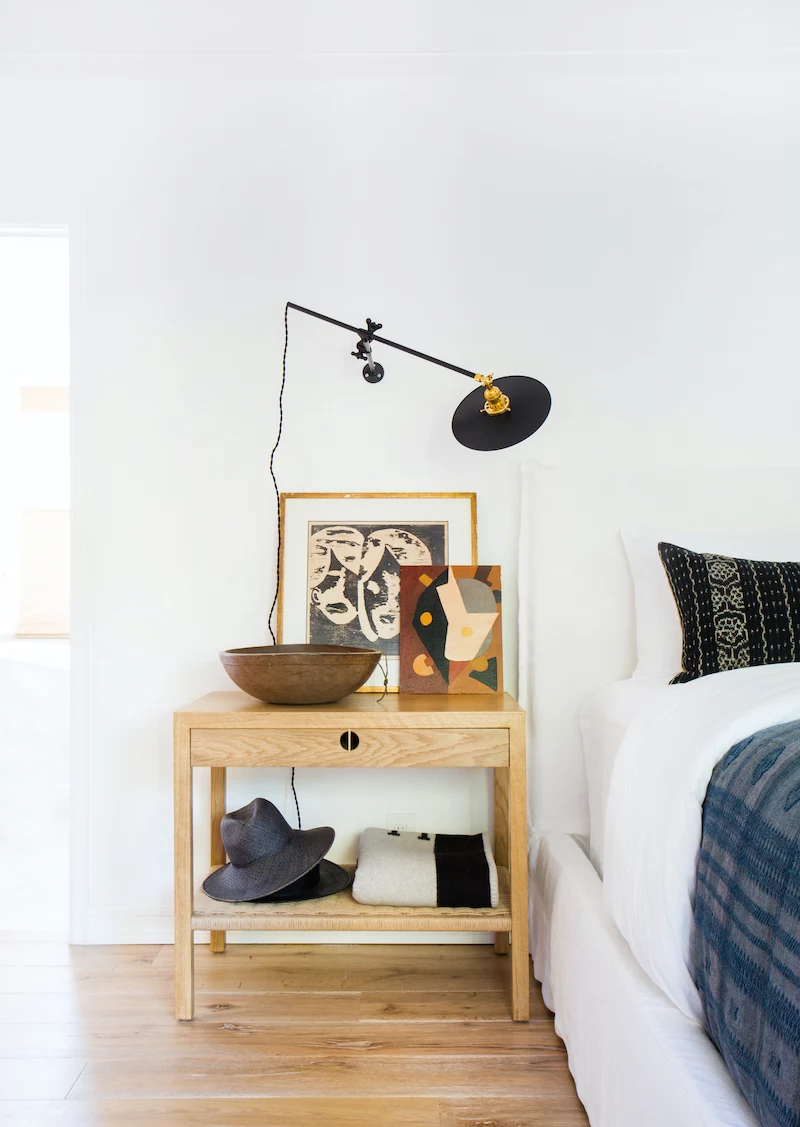
Mirrors are a designer’s secret weapon for making a room feel bigger and brighter. A large, full-length mirror just leaning against a wall adds a touch of casual elegance. Pro tip: Place a mirror directly opposite a window to instantly double your natural light.
And by the way, you don’t need to spend a fortune on framing. To save money, check out IKEA’s RIBBA or HOVSTA series. For a step up, an online service like Framebridge is fantastic. For a truly special piece, you can splurge on a local custom framer.
The Finishing Touches: Windows and Furniture
The final details provide comfort, storage, and privacy. Getting these right is the cherry on top.
Give Your Windows a Promotion
Ill-fitting curtains can make an entire room feel cheap. Here’s how to make your windows look grander:
Hang the curtain rod high and wide. Mount the rod 4-6 inches above the window frame and extend it 6-10 inches on either side. This tricks the eye into thinking the window is much larger. The curtains should just ‘kiss’ the floor or have a slight 1-2 inch puddle for a more dramatic look.
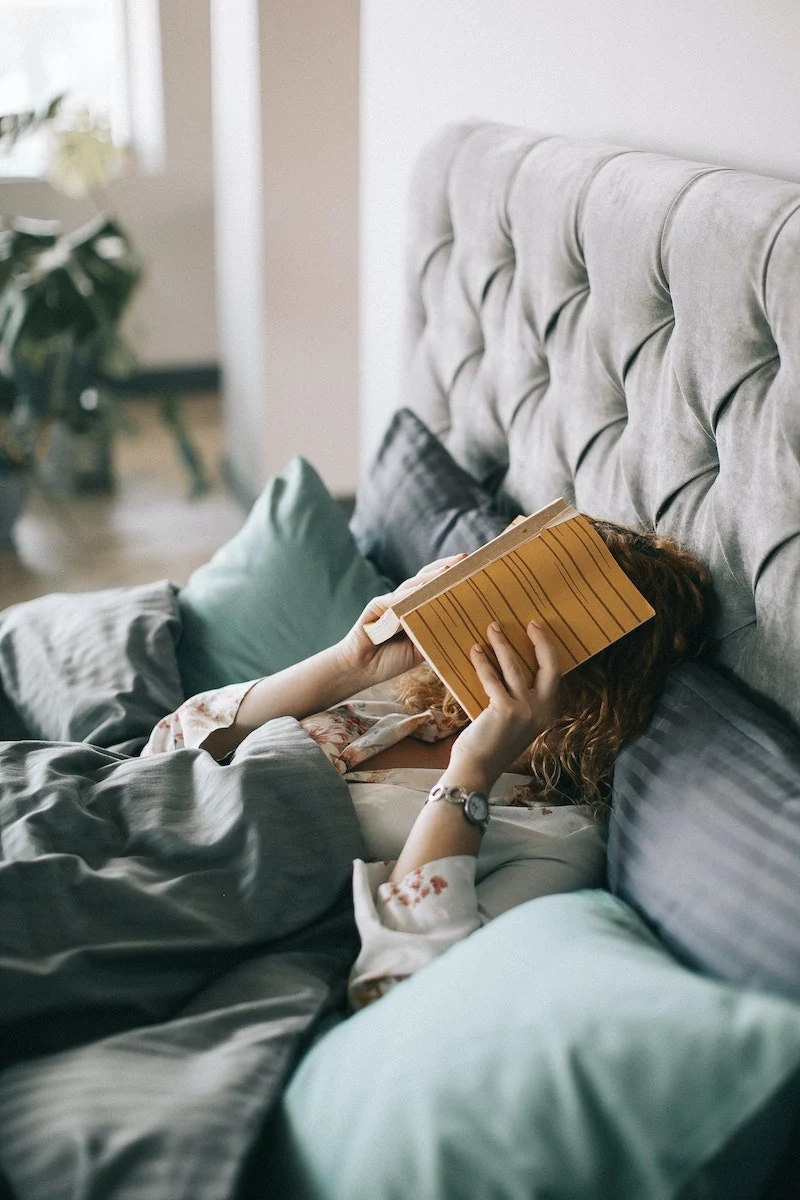
Here’s a quick win you can try today: Go look at your curtain rod. If it’s just hugging the window frame, spend 20 minutes moving it higher and wider. I promise, it’s a 20-minute fix that will make the entire room feel bigger and more intentional.
Smart and Serene Storage
Clutter is the enemy of calm. Your nightstand should be roughly the same height as the top of your mattress. And please, make sure it has at least one drawer. This lets you hide away your chargers, hand cream, and other clutter, leaving the top clear for just a lamp, a book, and maybe a small plant. It’s these small, intentional choices that, when added together, create a bedroom that truly feels like a retreat.
Inspirational Gallery
The secret to that five-star hotel feel often lies underfoot. Instead of a small rug floating in the middle of the room, choose a size large enough for the front two-thirds of your bed and both nightstands to rest on. This simple change makes the entire room feel more grounded, plush, and intentionally designed—instantly elevating the sense of luxury.
Percale: Imagine the perfect crisp, cool button-down shirt. That’s percale. It’s a plain, matte weave that’s breathable and light, getting softer with every wash. Ideal for those who tend to sleep hot. Brands like Brooklinen excel at this classic, hotel-style feel.
Sateen: If you prefer a silky, lustrous finish, sateen is your answer. Its weave has more threads on the surface, giving it a slight sheen and a buttery-soft drape that feels incredibly rich against the skin. Look to brands like Parachute for an exceptionally smooth sateen.
Ultimately, the choice is purely personal: choose crisp and cool (percale) or silky and smooth (sateen) for your ideal version of nightly luxury.
The sense of smell is the only one of our five senses that is directly linked to the limbic system, the part of the brain that processes emotion and memory.
This is why a signature scent can make your bedroom feel like a true retreat. Forget overpowering plugins. A high-quality linen spray with notes of lavender, sandalwood, or chamomile spritzed on your pillows before bed, or a subtle reed diffuser from a brand like NEST New York, creates a lasting, subconscious signal to your brain that this is a place of calm and rest.
The one detail that screams ‘custom’ more than any other? Hardware. That basic IKEA or big-box store dresser can look like a high-end designer piece with a simple swap. Instead of the standard knobs, invest in unique pulls or handles. Look for solid brass, matte black metal, or even leather tabs from specialized brands like Schoolhouse or Rejuvenation. It’s a ten-minute-fix that adds a surprising amount of character and weight.
How do luxury hotels get that incredibly plush, inviting bed look?
It’s all about strategic layering and sizing up. First, they often use a featherbed or a thick mattress topper for that sink-in feeling. Second, they use a duvet insert that’s one size larger than the duvet cover (e.g., a king-size insert in a queen-size cover) to make it look overstuffed and full. Finally, fold the duvet back a third of the way and prop up at least four sleeping pillows, not just two.
Forgetting about your ‘fifth wall’—the ceiling—is a missed opportunity. Painting it a very pale, subtle color, like a whisper-soft blue or a warm, barely-there blush, draws the eye upward and adds an unexpected layer of sophistication. For a truly daring but cozy effect in a room with high ceilings, consider painting it a dark, moody color like charcoal to create an intimate, cocoon-like atmosphere.
- It adds instant architectural interest.
- It provides a rich, tactile experience.
- It can disguise uneven walls or minor imperfections.
The secret? Grasscloth wallpaper. Applying this textural wonder to the wall behind your bed creates an immediate focal point that feels incredibly high-end. It adds warmth and dimension in a way paint simply can’t. While brands like Farrow & Ball or Phillip Jeffries are top-tier, you can find more affordable options on the market that deliver the same luxe effect.
Fact: The term ‘thread count’ merely refers to the number of threads woven into one square inch of fabric. High numbers are often achieved with thinner, lower-quality threads.
Don’t be fooled by marketing hype. A 300-thread-count sheet made from high-quality, long-staple cotton (like Egyptian or Pima) will feel far more luxurious and last longer than a 1000-thread-count sheet made from short-staple cotton. Focus on the material and the weave (percale or sateen), not just the number on the package.
Nothing cheapens a room faster than a bare, glaring lightbulb. Creating a luxe lighting scheme is about having multiple, low-level light sources. Think beyond the main overhead fixture, which should always be on a dimmer switch. Add a stylish floor lamp for reading, a small, warm-toned lamp on a dresser, and even discreet picture lights to highlight artwork. This creates soft pools of light that build a warm, inviting, and expensive-feeling ambiance.

